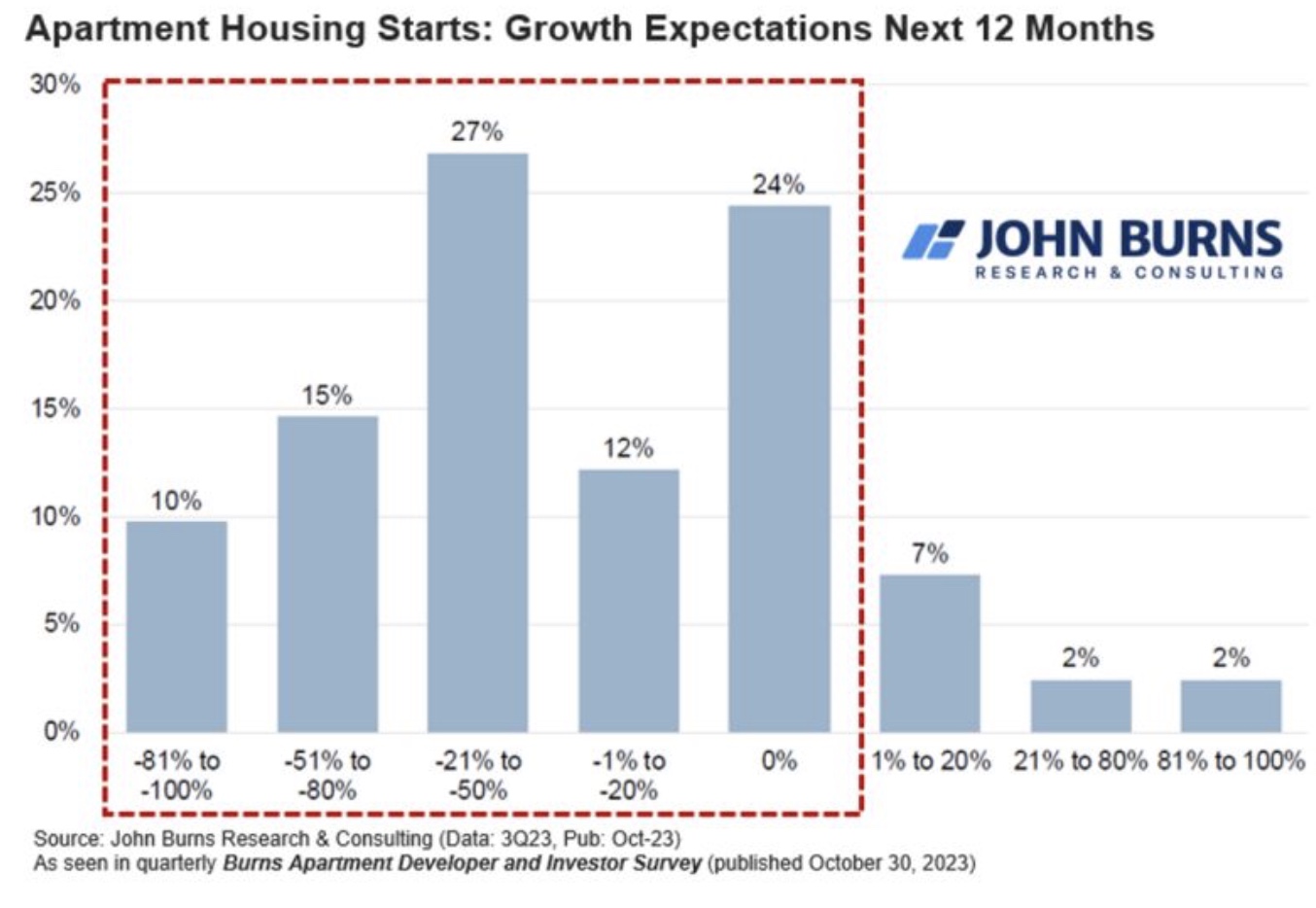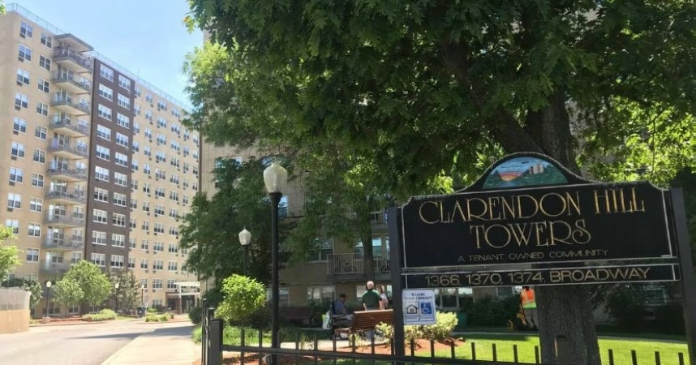Apartment developers expect a further decline in apartment starts over the next 12 months, after already falling more than 40 percent this year, suggests a chart from John Burns Research. The chart is based on data derived from the Burns Apartment Developer and Investor Survey dated October 30.

RealPage SVP and chief economist Jay Parsons, who shared the chart today on LinkedIn, says this survey adds support for the view that supply will drop off dramatically by the second half of 2025, and even more so in 2026.
Meanwhile, Parsons points out that developers face numerous challenges, including the cost of debt that either limits access to construction financing or comes with high rates and loan- to-costs in the 50 percent to 55 percent range.
The cost of construction remains materially unchanged, said Parsons. But, some developers say they need a 10 to 20 percent decline in construction costs to offset higher debt and insurance costs. Combined with flat or declining rents, higher costs mean projects are not penciling out. The scenario is driving some investors previously invested in ground-up development to eye potential distress plays instead. Investors are seeing opportunities to buy brand new, largely completed apartments potentially below or at replacement cost.
Parsons notes the industry is entering the latter phase of a generational high in apartment construction, where more units are completing than starting. Once this new supply leases up, the sharp decline in apartment starts will make way for a future low-supply phase and set the stage for another undersupply story.
He doesn’t see starts spiking up again any time soon, even if rates drop dramatically, which would only happen in recession, “and in that scenario, demand side challenges would be a blocker,” he said.
“I think we’ll look back at the post-COVID years as a generational golden era for apartment construction resulting from a perfect-storm of factors: cheap debt, ultra-high demand, and unprecedented cap rate compression between asset classes leading investors to find better returns through ground up development,” said Parsons.













